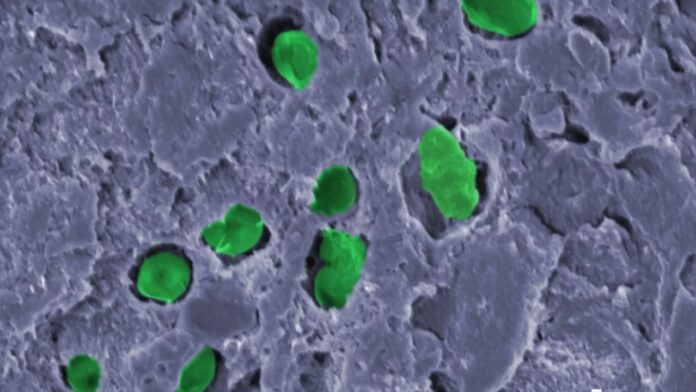Recently, interest in coatings—where live bacteria are trapped within an aqueous polymer coating for various potential applications—has increased. Biocoatings can be ready-to-use substitutes for carbon capture or biofuel generation in bioreactors and can be recycled numerous times.
A new study by scientists from the University of Surrey reports a fresh paint that can generate oxygen while capturing carbon. This new innovative paint- called ‘biocoating’ aka ‘Green Living Paint’- contains oxygen-producing bacteria capable of capturing carbon dioxide (CO2).
This new paint contains a bacterium called Chroococcidiopsis cubana, which undergoes photosynthesis to produce oxygen while capturing CO2. This bacterium is generally found in the desert and requires little water for survival.
Scientists immobilized Chroococcidiopsis cubana in a mechanically sturdy biocoating produced from polymer particles in water, which was totally dried before rehydrating, to test the bacteria’s applicability as a biocoating. They discovered that the bacteria in the coating collected CO2 and produced up to 0.4 g of oxygen for every gram of biomass each day. Over the course of a month, continuous oxygen readings revealed no symptoms of activity decline.
On the other hand, comparable trials were carried out using the cyanobacterium Synechocystis sp., which is typically found in freshwater. It could not create oxygen inside the coating, unlike its desert counterpart.
Dr Suzie Hingley-Wilson, a Senior Lecturer in Bacteriology at the University of Surrey, said: “With the increase in greenhouse gases, particularly CO2, in the atmosphere and concerns about water shortages due to rising global temperatures, we need innovative, environmentally friendly, and sustainable materials. Mechanically robust, ready-to-use coatings, or ‘living paints,’ could help meet these challenges by reducing water consumption in typically water-intensive bioreactor-based processes.”
Simone Krings, the lead author and a former Postgraduate Researcher in the Department of Microbial Sciences at the University of Surrey, said: “The photosynthetic Chroococcidiopsis have an extraordinary ability to survive in extreme environments, like droughts and after high levels of UV radiation exposure. This makes them potential candidates for Mars colonization.”
Professor Joseph Keddie, Professor of Soft Matter Physics in the School of Mathematics and Physics at the University of Surrey, said: “Our research grant from the Leverhulme Trust enabled this interdisciplinary project. We envision our biocoatings contributing to a more sustainable future, aligning perfectly with the vision of our Institute for Sustainability, where both Dr. Hingley-Wilson and I are fellows.”
Journal Reference:
- Simone Krings, Yuxiu Chen et al. Oxygen evolution from extremophilic cyanobacteria confined in hard. Microbiology Spectrum. DOI: 10.1128/spectrum.01870-23
